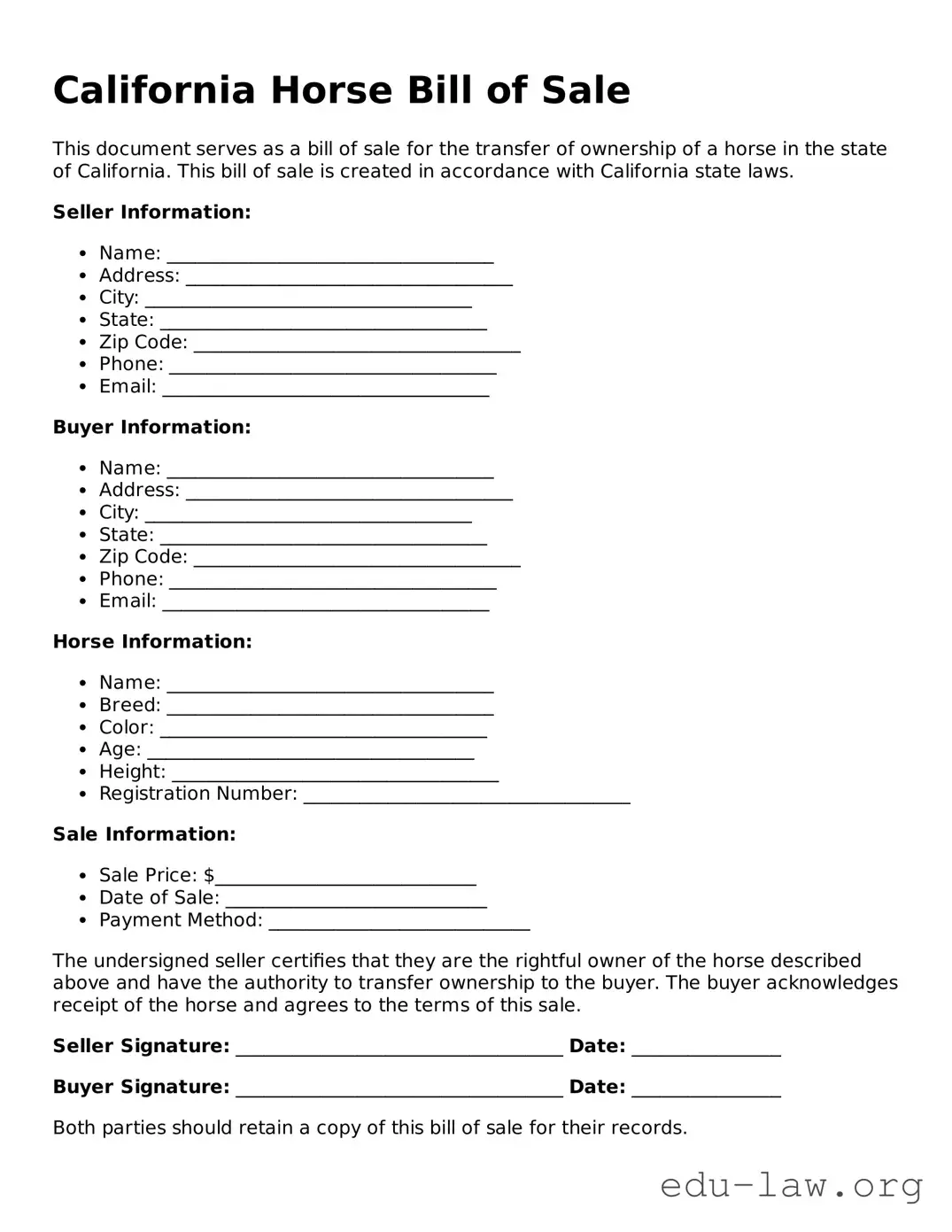What is a California Horse Bill of Sale?
A California Horse Bill of Sale is a legal document used when buying or selling a horse in California. This form transfers ownership from the seller to the buyer, ensuring that both parties have a written record of the transaction. It includes essential details about the horse, the parties involved, and terms of the sale, protecting both the buyer and seller during the process.
What information is typically included in the Horse Bill of Sale?
The form generally includes the names and addresses of both the buyer and seller, a description of the horse (including breed, age, color, and identifying markings), the sale price, date of the transaction, and any terms or conditions agreed upon. Additionally, it may note whether the horse is sold “as is” or with warranties regarding its health and performance.
Is the Horse Bill of Sale required in California?
While a Horse Bill of Sale is not legally required for every horse sale, it is highly recommended. Having a written document safeguards both parties by providing clear proof of the transaction. In case of disputes, it can serve as valuable evidence regarding the agreement and terms of sale.
Can a Horse Bill of Sale be used for other types of transactions?
This specific form is designed for horse transactions; however, similar bills of sale can be created for other livestock or property. Each type should have wording and details specific to that kind of asset to ensure clarity and legal effectiveness.
What is the process for completing the Horse Bill of Sale?
To complete the bill of sale, both the buyer and seller should fill out the required information accurately. It's advisable to discuss and agree on all terms beforehand. Once completed, both parties should sign and date the form, ideally in the presence of a witness, to create an additional layer of validation.
Do I need a notary for the Horse Bill of Sale?
A notary is not typically required for a Horse Bill of Sale in California. However, having the document notarized can add an extra level of authenticity and may be beneficial in case of future disputes. It’s wise to consider this option for more significant transactions.
What if the horse has health issues?
It’s crucial to disclose any known health issues in the Horse Bill of Sale. Transparency not only fosters trust but also helps protect the seller from potential legal claims after the sale. Buyers should also be encouraged to conduct their own health checks before completing the transaction.
Can I cancel a Horse Bill of Sale after it's signed?
Once a Horse Bill of Sale is signed by both parties, it is generally considered a binding contract. However, if both the buyer and seller mutually agree to cancel the transaction, they can create a cancellation agreement. Without mutual consent, cancelation may lead to legal complications.
Where can I obtain a Horse Bill of Sale form?
Horse Bill of Sale forms can be obtained through various sources, including online legal websites, local equestrian organizations, or by consulting a legal professional. Using a standardized form can help streamline the process and ensure that all necessary information is included.
